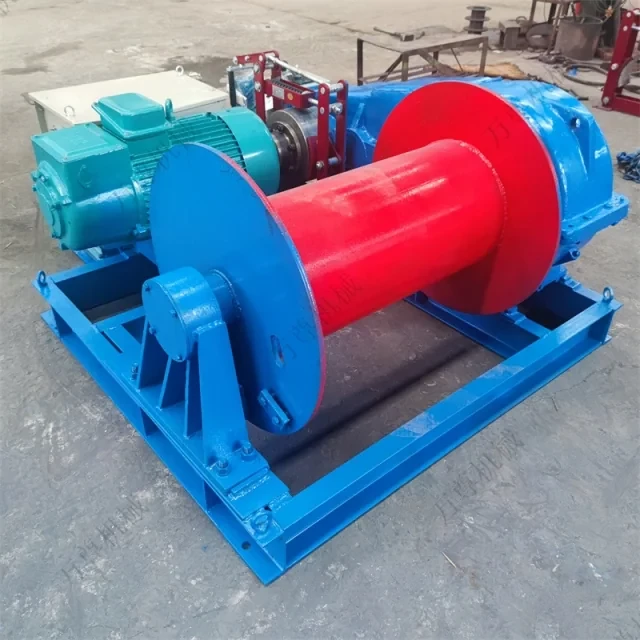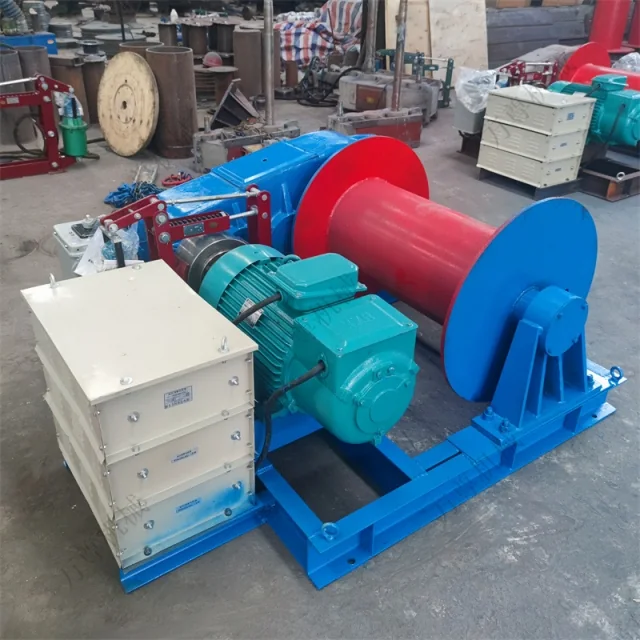When lifting tons of steel beams or hoisting materials to dizzying heights, construction crews need winches that won’t buckle under pressure. Planetary transmission systems have emerged as the go-to solution for these high-stakes scenarios—but what makes them structurally superior to alternatives like worm gear winches? This article breaks down the engineering advantages, real-world applications, and critical selection criteria that make planetary winches indispensable on modern job sites.
Why Planetary Transmission Wins in Construction
The Mechanics Behind Compact Power
Planetary winches derive their strength from a gear system that distributes load across multiple contact points. Imagine three smaller gears (the "planets") rotating around a central "sun" gear, all encased within an outer ring gear. This design achieves two critical benefits:
- Higher Torque Density: The load is shared among multiple gears, reducing wear on individual components.
- Efficiency: Less energy is lost to friction compared to worm gears, where sliding motion generates heat.
Did you know? A single planetary gear set can achieve efficiency rates over 95%, while worm gears often fall below 60%.
Job Site Advantages Over Worm Gear Winches
Construction environments demand reliability. Here’s how planetary winches rise to the challenge:
- Durability: Fewer failure points in high-cycle operations (e.g., repetitive lifting of concrete panels).
- Compactness: Their stacked gear design saves space—critical for cramped urban construction sites.
- IP Ratings: Planetary winches often meet IP55 or higher, resisting dust and water ingress during outdoor use.
A common pain point with worm gears? Overheating during prolonged use. Planetary systems mitigate this through efficient power transfer.
Real-World Applications and Selection Criteria
Case Study: High-Rise Material Hoisting
In a Tokyo high-rise project, crews switched from worm gear to planetary winches for lifting prefabricated facades. The results:
- 30% Faster Cycle Times: Reduced downtime from cooling periods.
- Lower Maintenance: No worm gear "self-locking" mechanism to jam under load.
Load Capacity vs. Portability Tradeoffs
While planetary winches excel in heavy lifting, selecting the right model involves balancing:
| Factor | Consideration |
|---|---|
| Load Capacity | Planetary systems handle 1–100+ tons, but verify dynamic vs. static ratings. |
| Portability | Modular designs (like those in Garlway’s lineup) allow for easier transport. |
| Duty Cycle | For 24/7 operations, prioritize models with thermal protection. |
Ever wondered why some cranes still use worm gears? Their self-locking feature suits static holds—but for dynamic lifting, planetary reigns supreme.
Key Takeaways for Construction Teams
- Prioritize Efficiency: Planetary winches reduce energy waste, cutting operational costs.
- Match the Environment: For outdoor sites, verify IP ratings and corrosion-resistant materials.
- Plan for Load Dynamics: Consider shock loads (e.g., swinging beams) and select winches with buffered braking systems.
For crews relying on Garlway’s rugged winch solutions, planetary models offer the longevity and power needed to keep projects on schedule. The next time you’re lifting a 10-ton steel column, remember: it’s not just about strength—it’s about smart power distribution.
Related Products
- Ready Mixer Machine for Construction Ready Mix Machinery
- Electric and Hydraulic Winch for Heavy Duty Applications
- Portable Small Trailer Winch
- Warn Winch Windlass Boat Trailer Winch
- Commercial Construction Mixer Machine for Soil Cement Mixing Concrete
Related Articles
- How to Choose the Right Concrete Type for Every Construction Challenge
- How to Classify and Resolve Concrete Mixer Hazards with Compliance
- How to Choose Concrete Mixers for Long-Term Reliability and Cost Savings
- How to Test Concrete Mixer Brake Systems for Optimal Safety and Compliance
- How to Master Concrete Mixer Operation: Training, Certification, and Safety Protocols









